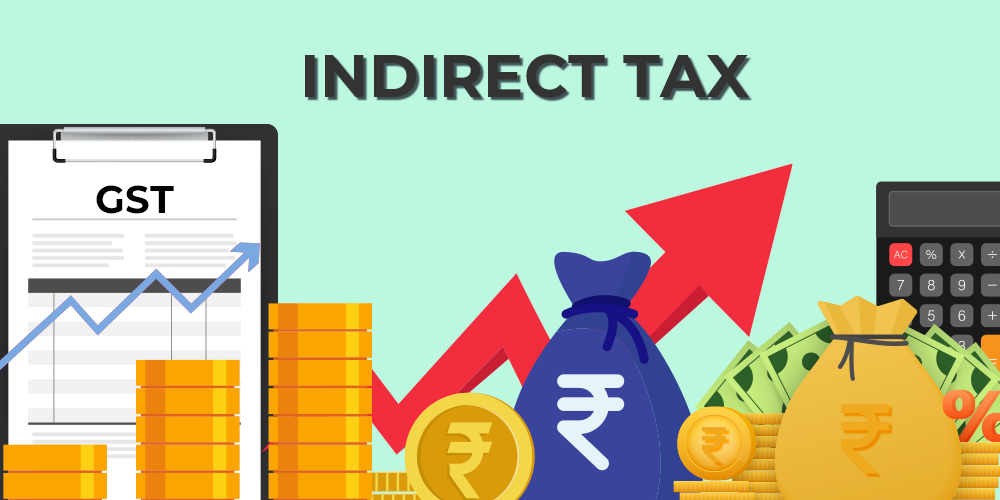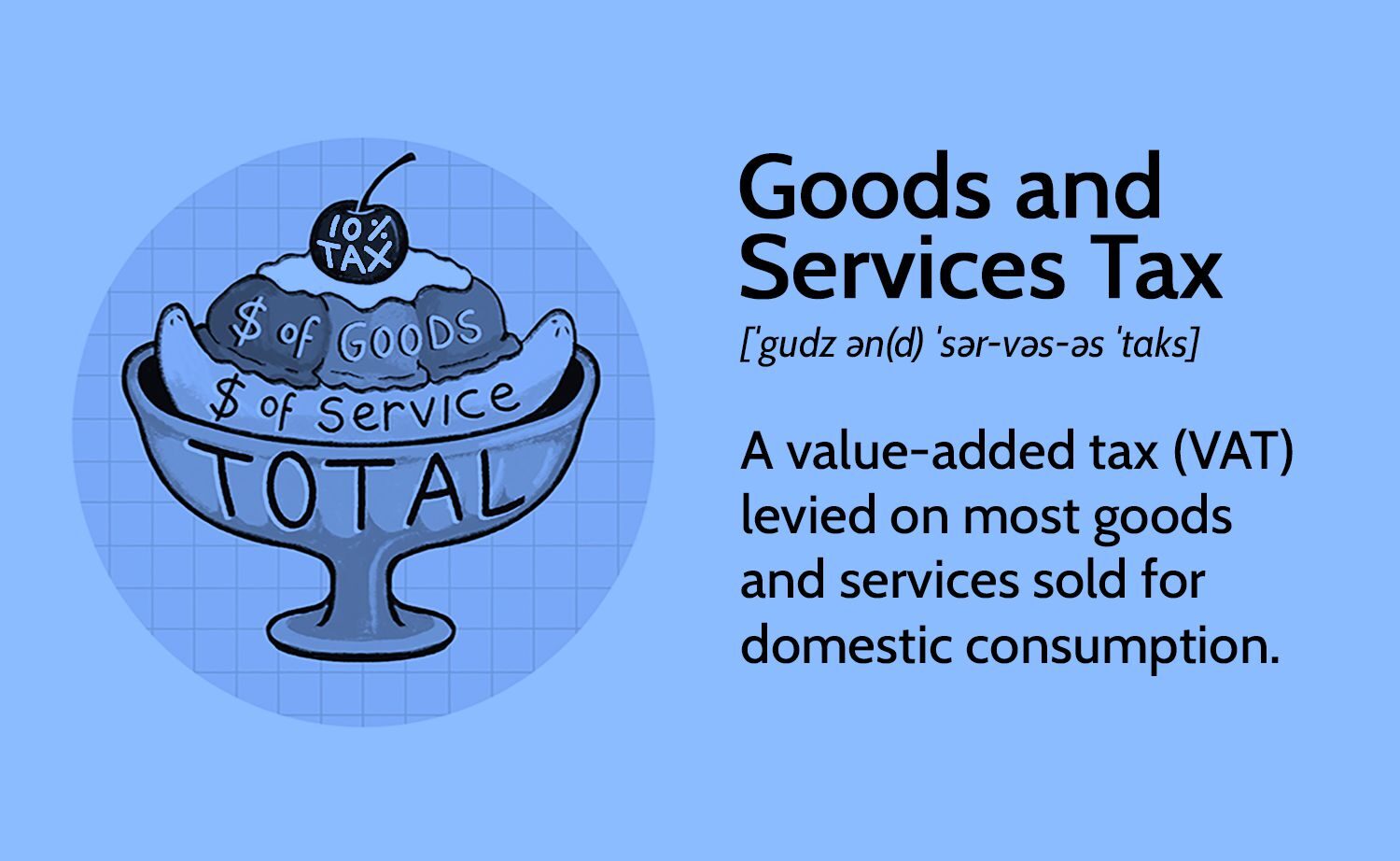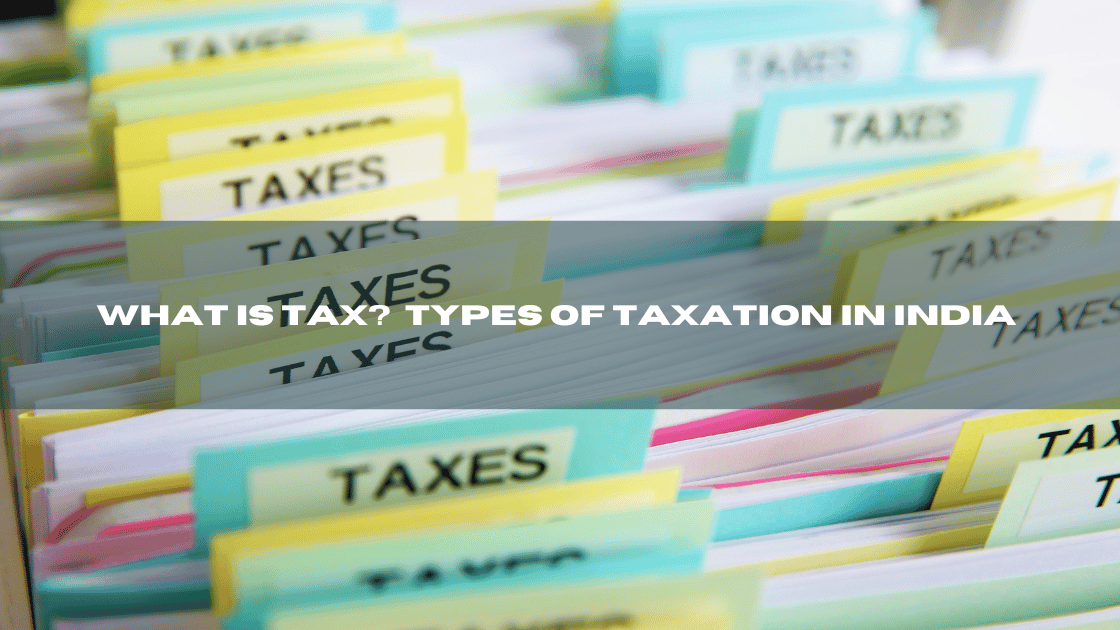Tax is a financial charge imposed by the government on individuals and businesses. India has two main types of taxes: direct and indirect.
Taxes are essential for funding government operations and public services. In India, direct taxes are levied directly on income and wealth, such as income tax and corporate tax. Indirect taxes are imposed on goods and services, like GST and customs duties.
The Indian tax system ensures equitable revenue distribution and supports economic growth. Tax compliance is crucial for the nation’s development. Understanding the types of taxes helps individuals and businesses plan their finances better. The Indian tax structure aims to create a balanced and fair economic environment for all citizens.

Types Of Taxes
Taxes are mandatory financial charges imposed by the government on individuals and businesses. They fund various public services and infrastructure. In India, taxation is categorized into two main types: direct and indirect taxes. Understanding these types helps in grasping the Indian tax system better. Let’s delve into the different types of taxes in India.
Direct taxes are levied directly on individuals and organizations. These taxes are paid directly to the government by the entity on whom it is imposed. Here are some common direct taxes in India:
- Income Tax: This tax is imposed on the earnings of individuals, Hindu Undivided Families (HUFs), and businesses. The tax rate varies based on income slabs.
- Corporate Tax: Companies in India pay this tax on their profits. The rate differs for domestic and foreign companies.
- Wealth Tax: Although abolished in 2015, it was previously levied on the net wealth of individuals and HUFs exceeding a specified limit.
- Capital Gains Tax: This tax is on the profit from the sale of assets or investments. It is categorized into short-term and long-term capital gains tax.
Here is a table summarizing direct taxes:
| Type of Direct Tax | Description |
|---|---|
| Income Tax | Tax on individual earnings based on income slabs |
| Corporate Tax | Tax on company profits, varies for domestic and foreign companies |
| Wealth Tax | Tax on net wealth above a certain limit (abolished in 2015) |
| Capital Gains Tax | Tax on profit from the sale of assets or investments |
Indirect taxes are not directly paid by individuals but are collected by intermediaries. These taxes are added to the price of goods and services, which the end consumer ultimately pays. Here are some common indirect taxes in India:
- Goods and Services Tax (GST): Introduced in 2017, GST is a unified tax levied on the supply of goods and services. It has subsumed multiple taxes like VAT, service tax, and excise duty.
- Customs Duty: This tax is imposed on goods imported into India. It protects domestic industries by making imported goods more expensive.
- Excise Duty: Levied on the manufacture of goods within India, this tax has largely been replaced by GST.
- Value Added Tax (VAT): Previously levied on the sale of goods, VAT has been subsumed under GST for most goods and services.
Below is a table summarizing indirect taxes:
| Type of Indirect Tax | Description |
|---|---|
| Goods and Services Tax (GST) | Unified tax on the supply of goods and services |
| Customs Duty | Tax on imported goods to protect domestic industries |
| Excise Duty | Tax on the manufacture of goods within India (replaced by GST) |
| Value Added Tax (VAT) | Tax on the sale of goods (subsumed under GST) |
Direct Taxes
Taxes are compulsory financial charges imposed by the government on individuals and entities to fund public services and infrastructure. In India, the tax system is divided into two main categories: direct taxes and indirect taxes. Direct taxes are levied directly on the income or wealth of individuals and organizations. This blog post delves into the definition and types of direct taxes in India, focusing on income tax and corporate tax.
Income Tax
Income tax is a direct tax imposed on the income earned by individuals, Hindu Undivided Families (HUF), and other entities. The Income Tax Act, 1961 governs the rules and regulations regarding income tax in India. The tax is calculated based on the income slabs defined by the government, which are revised periodically.
Here are the current income tax slabs for individuals below 60 years:
| Income Range (₹) | Tax Rate |
|---|---|
| Up to 2,50,000 | Nil |
| 2,50,001 to 5,00,000 | 5% |
| 5,00,001 to 10,00,000 | 20% |
| Above 10,00,000 | 30% |
The following points highlight key aspects of income tax:
- Filing Returns: Individuals must file income tax returns annually.
- Tax Deductions: Various deductions are available under sections like 80C, 80D, etc.
- Advance Tax: If the tax liability exceeds ₹10,000, individuals must pay advance tax.
Corporate Tax
Corporate tax is a direct tax imposed on the net income or profit of corporations and businesses. The Income Tax Act, 1961 governs corporate tax in India. Companies are required to pay tax on their profits after deducting allowable expenses.
The corporate tax rates in India are as follows:
| Type of Company | Tax Rate |
|---|---|
| Domestic Company (Turnover up to ₹400 crore) | 25% |
| Domestic Company (Turnover above ₹400 crore) | 30% |
| Foreign Company | 40% |
Important aspects of corporate tax include:
- Minimum Alternate Tax (MAT): Companies must pay MAT if their tax liability is lower than a certain percentage of their book profits.
- Tax Audits: Companies must undergo tax audits if their turnover exceeds specified limits.
- Transfer Pricing: Rules to ensure that companies do not manipulate prices to reduce tax liability.
Indirect Taxes
Taxes are essential financial charges imposed by the government on individuals and businesses. In India, the tax system is divided into two main categories: Direct Taxes and Indirect Taxes. Indirect Taxes are taxes where the burden of tax payment falls on the final consumer, although the tax is initially paid by another entity. They are typically included in the price of goods and services.
Goods And Services Tax (gst)
Goods and Services Tax (GST) is a comprehensive indirect tax levied on the manufacture, sale, and consumption of goods and services across India. It is designed to be a single tax replacing multiple indirect taxes. GST is structured to be a multi-stage tax collected at every stage of the supply chain, from production to the final sale to the consumer.
GST is categorized into three types:
- CGST (Central Goods and Services Tax): Levied by the central government on intra-state transactions.
- SGST (State Goods and Services Tax): Levied by the state governments on intra-state transactions.
- IGST (Integrated Goods and Services Tax): Levied on inter-state transactions and imports.
- Simplified Tax Structure: Replaces multiple taxes with a single tax.
- Input Tax Credit: Allows businesses to claim credit for taxes paid on inputs.
- Transparency: Reduces tax evasion and corruption.
- Uniformity: Ensures uniform tax rates across states.
Here is a table summarizing the GST rates for different categories:
| Category | GST Rate |
|---|---|
| Essential Goods | 5% |
| Standard Goods and Services | 12% – 18% |
| Luxury Goods | 28% |
Customs Duty
Customs Duty is a type of indirect tax imposed on goods imported into or exported from India. The primary goal of Customs Duty is to protect domestic industries from foreign competition and to generate revenue for the government.
- Basic Customs Duty (BCD): Levied on imported goods at varying rates.
- Additional Customs Duty (ACD): Also known as Countervailing Duty (CVD), it is equivalent to the excise duty on similar goods produced domestically.
- Protective Duty: Imposed to protect domestic industries from foreign competition.
- Anti-Dumping Duty: Levied on goods imported below fair market value.
- Revenue Generation: Provides significant revenue to the government.
- Protectionism: Shields domestic industries from foreign competition.
- Regulation of Imports and Exports: Controls the inflow and outflow of goods.
- International Trade Balance: Helps maintain a balance in international trade.
Customs Duty rates vary based on the type of goods, their origin, and their end-use. Importers must comply with customs regulations and ensure proper documentation for smooth processing.
Taxation In India
In India, taxes are crucial for the nation’s development. Taxes are financial charges imposed by the government on individuals and businesses to fund public services and infrastructure. The Indian tax system is categorized into Direct and Indirect Taxes. Understanding the history and current structure of taxation in India provides a comprehensive view of how the system operates.
History Of Taxation In India
The history of taxation in India dates back to ancient times. Kautilya’s Arthashastra, written in the 4th century BCE, is one of the oldest texts mentioning tax collection. During the Maurya Dynasty, taxes were collected on land, trade, and commerce. The British era introduced structured taxation systems, including the Income Tax Act of 1860.
Key points in the history of taxation:
- Ancient Period: Taxes were based on agricultural produce and trade.
- Medieval Period: Mughal rulers imposed taxes like Zakat and Jizya.
- British Period: Introduction of modern taxation systems, including income tax.
A table summarizing the key historical milestones:
| Period | Key Developments |
|---|---|
| Ancient | Agricultural and trade-based taxes, Arthashastra |
| Medieval | Mughal taxes like Zakat and Jizya |
| British | Income Tax Act of 1860 |
Current Indian Tax System
The current Indian tax system is a well-structured framework. It includes Direct and Indirect Taxes. Direct taxes are levied directly on income and wealth, while indirect taxes are collected on goods and services. The most significant reform in recent times is the introduction of the Goods and Services Tax (GST) in 2017.
Key components of the current tax system:
- Direct Taxes: Income Tax, Corporate Tax, Wealth Tax
- Indirect Taxes: GST, Customs Duty, Excise Duty
GST has simplified the tax structure by replacing multiple indirect taxes with a single tax. The current tax rates are standardized across the nation, reducing confusion and promoting ease of business.
Here’s a table summarizing the types of taxes:
| Type of Tax | Examples |
|---|---|
| Direct Tax | Income Tax, Corporate Tax |
| Indirect Tax | GST, Customs Duty |
Understanding the current tax system helps individuals and businesses comply with regulations and benefit from the various provisions available.
Taxation Authorities
India’s tax system is a crucial aspect of its economy. Taxes are mandatory financial charges imposed by the government on individuals and businesses. They help fund public services and infrastructure. There are two main types of taxes in India: direct and indirect taxes. Direct taxes are paid directly to the government by individuals or organizations. Indirect taxes are collected by intermediaries, such as retailers, from the consumer. The administration of taxes in India is managed by specific authorities. Understanding these taxation authorities is essential for comprehending the entire tax system.
Central Board Of Direct Taxes (cbdt)
The Central Board of Direct Taxes (CBDT) is a crucial part of the Department of Revenue under the Ministry of Finance. It administers direct taxes in India. The CBDT is responsible for formulating policies related to direct taxes. It ensures effective implementation and adherence to tax laws.
Here are some key functions of the CBDT:
- Policy Formulation: The CBDT drafts policies related to direct taxes.
- Implementation: It ensures the implementation of direct tax laws.
- Collection: The CBDT oversees the collection of direct taxes like Income Tax and Corporate Tax.
- Administrative Control: It exercises control over the Income Tax Department.
The CBDT also issues guidelines and instructions for the proper functioning of the Income Tax Department. It ensures that tax collection processes are smooth and transparent.
The organizational structure of the CBDT includes:
| Position | Role |
|---|---|
| Chairman | Heads the CBDT |
| Members | Oversee different functions like legislation, investigation, audit, and judicial matters |
Central Board Of Indirect Taxes And Customs (cbic)
The Central Board of Indirect Taxes and Customs (CBIC) is another vital board under the Department of Revenue. It deals with the levy and collection of indirect taxes. These include Goods and Services Tax (GST), Customs Duty, and Excise Duty.
Key functions of the CBIC include:
- Policy Formulation: Creating policies related to indirect taxes.
- Implementation: Ensuring the implementation of indirect tax laws.
- Collection: Overseeing the collection of GST, Customs Duty, and Excise Duty.
- Administration: Managing the Customs and Central Excise Departments.
The CBIC plays a significant role in facilitating trade and protecting the country’s borders against illegal imports and exports. It ensures that the taxation system is fair and efficient.
The organizational structure of the CBIC includes:
| Position | Role |
|---|---|
| Chairman | Heads the CBIC |
| Members | Supervise various functions like GST, Customs, Legal, and Audit |
Tax Reforms
Taxes are essential for the economic development of a nation. In India, taxes are categorized into direct and indirect taxes. Direct taxes include income tax and corporate tax, while indirect taxes encompass GST and customs duty. Over the years, India has seen significant tax reforms aimed at simplifying the tax structure and increasing compliance. Two major reforms are the implementation of the Goods and Services Tax (GST) and changes in the income tax slabs.
Goods And Services Tax (gst) Implementation
The introduction of the Goods and Services Tax (GST) in 2017 was a landmark reform in the Indian tax system. GST replaced multiple indirect taxes with a single tax, simplifying the tax structure. GST is a destination-based tax applied on every value addition, ensuring transparency and efficiency.
Key benefits of GST implementation include:
- Elimination of the cascading effect of taxes, resulting in lower costs for consumers.
- Unified tax regime across India, promoting ease of doing business.
- Improved tax compliance due to the streamlined tax structure.
GST is divided into four tax slabs: 5%, 12%, 18%, and 28%, depending on the type of goods and services. Essential items like food grains are taxed at 0%, while luxury items attract the highest tax rate of 28%.
| Tax Slab | Examples of Goods/Services |
|---|---|
| 0% | Food grains, fresh vegetables |
| 5% | Packaged food items, transport services |
| 12% | Computers, processed food |
| 18% | Soap, toothpaste, restaurant services |
| 28% | Luxury cars, aerated drinks |
Income Tax Slab Changes
The Indian government frequently revises the income tax slabs to address economic conditions and inflation. These changes aim to offer relief to taxpayers and increase disposable income, boosting consumer spending.
Recent changes in income tax slabs include the introduction of a new tax regime in 2020. This regime offers lower tax rates but without certain exemptions and deductions. Taxpayers can choose between the new and old regimes based on their financial situation.
Below is a comparison of the old and new tax regimes:
| Income Range | Old Regime Tax Rate | New Regime Tax Rate |
|---|---|---|
| Up to ₹2.5 lakh | Nil | Nil |
| ₹2.5 lakh to ₹5 lakh | 5% | 5% |
| ₹5 lakh to ₹7.5 lakh | 20% | 10% |
| ₹7.5 lakh to ₹10 lakh | 20% | 15% |
| ₹10 lakh to ₹12.5 lakh | 30% | 20% |
| ₹12.5 lakh to ₹15 lakh | 30% | 25% |
| Above ₹15 lakh | 30% | 30% |
The new tax regime simplifies tax calculations but removes popular deductions like Section 80C, 80D, and HRA. Taxpayers must evaluate both regimes to determine which one maximizes their savings.

Frequently Asked Questions
What Is India’s Tax System Direct And Indirect Tax?
India’s tax system includes direct and indirect taxes. Direct taxes include income tax and corporate tax. Indirect taxes include GST, customs duties, and excise duties. Direct taxes are paid directly to the government. Indirect taxes are collected by intermediaries and passed on to the government.
What Are The Different Types Of Taxes In India?
India has two main types of taxes: direct and indirect. Direct taxes include income tax and corporate tax. Indirect taxes include GST, customs duty, and excise duty.
What Are The Main Features Of The Indian Tax System?
The Indian tax system features both direct and indirect taxes. Major taxes include Income Tax, GST, and Corporate Tax. It operates on a progressive tax rate structure. Compliance and digitalization are increasing. Tax administration is managed by the Central Board of Direct Taxes (CBDT) and the Central Board of Indirect Taxes and Customs (CBIC).
How Much Tax Is There In India?
In India, the income tax rates range from 5% to 30% based on income slabs. Goods and Services Tax (GST) varies between 5% and 28%. Additionally, there are other taxes like excise duty and customs duty.
Conclusion
Understanding taxes is crucial for managing finances in India. Both direct and indirect taxes play significant roles. Knowing the types and their implications helps in better financial planning. Stay informed about the Indian tax system for smarter decisions and compliance.
This knowledge ensures you navigate taxation effectively and efficiently.










Leave a Reply